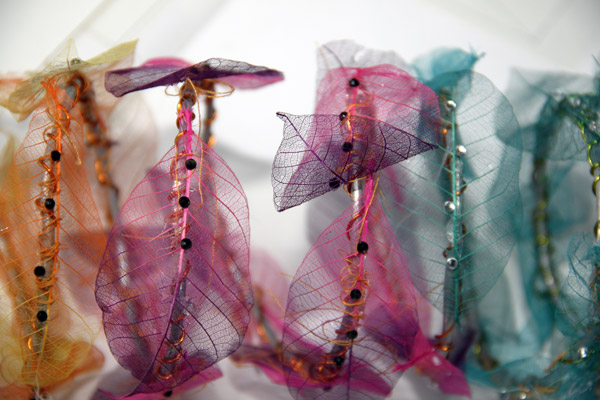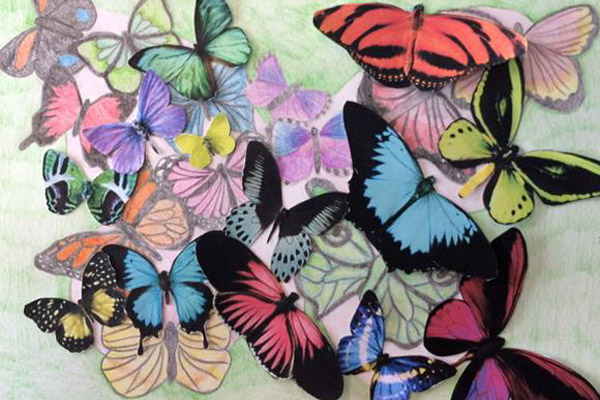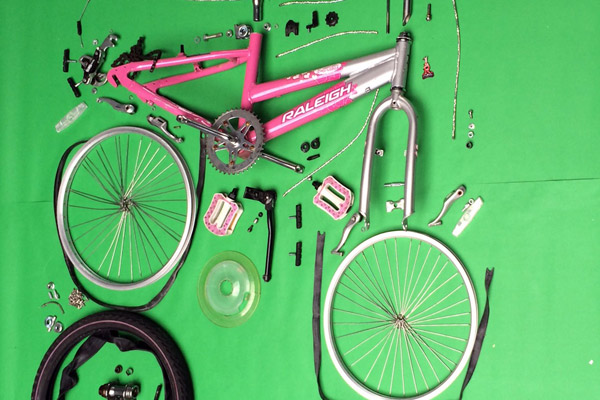INTRODUCTION
The Art Department is at the heart of creative learning in the school. Art in schools is often experienced as the regurgitation of obsolete techniques and practices with little relevance to contemporary art or the skills needed for a successful career in art and design. Contemporary artist Jake Chapman (of Jake and Dinos Chapman fame) controversially stated recently that it was pointless taking children to galleries to see art as they were unable to comprehend its meaning. This department strongly opposes these views.
Dr. Emma Radley has conducted extensive research in the field of art education based on the work created in the Art Department at Teesside High. Her doctoral research sought to explore the idea of the ‘artist-teacher’ which has led to more recent research on the concept of the ‘artist student’. On entering the Art Department, each student is considered to be an artist in their own right, with their own personal set of experiences and ideas.
KEY STAGE THREE CURRICULUM
It is important to give students in Years 7 and 8 the opportunity to explore and experiment with a wide range of techniques, media, and processes. But it is equally important for them to have the opportunity to research their own ideas, methods, and practices. The Year 7 and 8 curriculum provides opportunities to work in both 2D and 3D, individually, independently, and collaboratively, in school, at home, and in other locations. Schemes of work are rewritten frequently based on the needs, interests and previous experiences of the students. Once students have gained confidence they are ready by Year 9 to enjoy the greater freedom of schemes designed to allow them to follow their own interests.
KEY STAGE FOUR CURRICULUM (GCSE)
EDEXCEL – ART AND DESIGN (2AD01)
This is a non-specialist course that covers the disciplines of Fine Art, 3-D Design, Textile Design, Graphic Communication and Photography (Lens & Light-based Media).
Unit 1 – Internally Set Assignment – A personal portfolio of work worth 60% of the total marks.
Unit 2 – Externally Set Assignment – Preparatory work leading to a Controlled Test worth 40% of total marks.
A-LEVEL CURRICULUM (AS AND A2)
EDEXCEL – ART, CRAFT AND DESIGN (8/9AD01), FINE ART (8/9FA01), TEXTILE DESIGN (8/9TE01), THREE-DIMENSIONAL DESIGN (8/9TD01), PHOTOGRAPHY (8/9PY01)
Students can follow the non-specialist course or follow a course of specialized study.
Unit 1 – Internally Set Assignment – Coursework worth 60% of AS.
Unit 2 – Externally Set Assignment – Preparatory work and Timed Test worth 40% of AS.
Unit 3 – Internally Set Assignment – Coursework including Personal Study worth 60% of A2.
Unit 4 – Externally Set Assignment – Preparatory work and Timed Test worth 40% of total A2.
AS and A2 each worth 50% of total A Level marks.
The ‘content’ (or subject matter) of artwork for GCSE Art and Design is not restricted by the syllabus and as such, it is left for students and teachers to decide what ideas they would like to pursue. The ‘Externally Set Assignment’ provides a theme but allows for this to be interpreted in any way. In many centers, this means little focus is placed on the teaching of ‘content’ and instead, it is ‘form’ alone that is taught. ‘Form’ refers to how an artwork is created, whilst ‘content’ refers to what and most importantly, the why.
A glance at contemporary art or design will reveal that this limited approach to teaching, which only addresses the assessment objectives of the syllabi of art courses, cannot adequately prepare students for continued study, or a career in art and design. At Teesside High School students have the freedom to develop their own content, to argue and defend their ideas, to challenge themselves, each other and their audience, and to produce work that truly reflects the expectations of arts professionals. They are ‘artist students’ whose work is progressive, relevant, exciting and challenging.
DIGITAL LEARNING
There are few changes that have had such a monumental impact on teaching in art than recent advances in digital learning. Students are able to begin by conducting personal research, self-differentiating their sources. They can use traditional and digital methods and techniques, and develop unique practices based on the integration of both. Image manipulation has become easier, faster, cheaper and accessible by all. Work can be stored, displayed, discussed and shared from any device, wherever there is a wifi connection.
ENRICHMENT
The Art Studio is open at lunchtime during the week, and students can use these times to complete coursework, homework, extension work or to develop their own ideas. This is a popular activity and is an excellent opportunity for students at different stages of their development to see and question what other students are producing. This often leads to the cross-pollination of some interesting ideas, or to the collaboration of students at different levels.
It is vital that students have the opportunity to view art first hand as this can change their whole perception of the work and the subject. Art is intended to be viewed ‘in the flesh’ so students at all levels have opportunities to view pieces in situ, which usually means visiting galleries and museums. Emphasis is placed on selecting the very best opportunities for this, and also on looking at contemporary art, work that is produced within the lifetime of the student.
Recent visits have included the Museum of Modern Art in New York, Frieze Art Fair in London, the Baltic Centre for Contemporary Art in Gateshead, Middlesbrough Institute of Modern Art, Tate Modern in London, the National Gallery in London, The Saatchi Gallery in London and Yorkshire Sculpture Park.
WHERE DOES ART AND DESIGN LEAD?
It is still a commonly held and pernicious belief that the arts are both non-academic and do not lead to successful careers. Both assumptions are erroneous with the creative industries now being one of the fastest-growing areas of the UK economy and worth £8.8 million an hour. That’s £76.9 billion a year. University schools of arts subjects have for some time now had the same range of degree levels and research opportunities open to them as other subject areas. This being such a new field, art research degrees offer ground-breaking opportunities. In addition, any student wanting to be involved in the business in the future would benefit greatly from a basic understanding of creative methodologies.
The National Careers Service profiles a number of jobs in the art and design family including:
- Animator
- Architect
- Art editor
- Museum/gallery curator
- Arts administrator
- Art therapist
- CAD technician
- Ceramics designer
- Conservator
- Costume designer
- Design engineer
- Ergonomist
- Fashion designer
- Fine artist
- Footwear designer
- Furniture designer
- Game designer
- Glassmaker
- Graphic designer
- Milliner
- Illustrator
- Interior designer
- Jewelry designer
- Landscape architect
- Leather craftworker
- Medical illustrator
- Model maker
- Photographer
- Product designer
- Set designer


